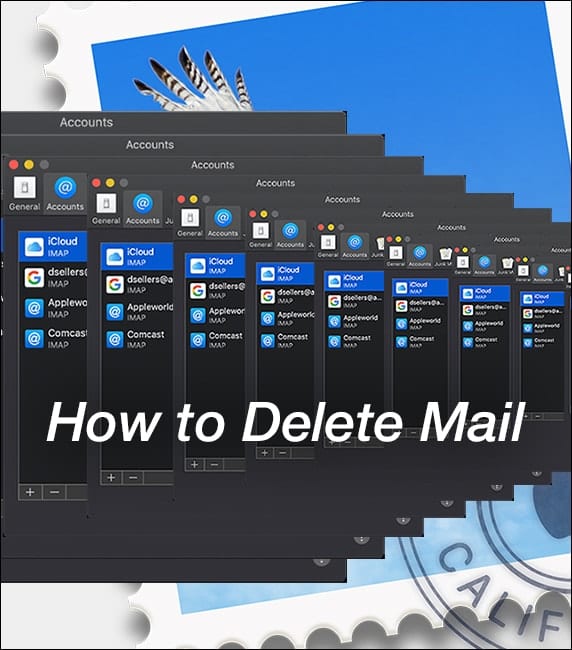
Controlling Spam
Spam®. The word conjures up the Hormel spiced ham product that is popular in Hawaii and other parts of the world. Spam gained even more fame and fortune in the 1970s as the memorable subject of a sketch and song by the British Monty Python comedy troupe.
In the early years of the Internet as Usenet newsgroups and email began filling up with junk mail advertising, some users flooded forums with the word spam as a nod to the “repetitive and unwanted presence of spam” in the Monty Python sketch. Since then, spam has been used as a general term for those endless streams of advertising emails and messages. In this four-part series, we’re going to provide Rocket Yard readers with some helpful tips on ways to reduce the negative impact of spam. But first, let’s learn a bit more about spam and why it’s something you’ll want to get rid of.
The Definition of Spam
According to the macOS dictionary:
spam | spam |
noun
- irrelevant or inappropriate messages sent on the Internet to a large number of recipients.
- unwanted or intrusive advertising on the Internet: [as modifier] : an autogenerated spam website.
- (Spam) trademark a canned meat product made mainly from ham.
verb [with object]
send the same message indiscriminately to (large numbers of recipients) on the Internet.
Why Is Spam A Bad Thing?
Why does this one word provoke so much hatred from the vast majority of Internet users? There are a number of reasons:
1) “It’s annoying, it wastes time, it misuses resources, it’s an invasion of privacy, it costs internet users money, it’s annoying (worth repeating)” (Quote from FW2.com)
2) The practice of sending unsolicited mass mailings to huge numbers of email users costs the victims much more than the senders.
For valid email advertisers, there’s a cost to sending the emails out in such a way that they’re not stopped by spam control algorithms. Services used by these advertisers, such as ConstantContact and MailChimp, require each sender to place an unsubscribe link in each email so that users who don’t wish to receive the mailings can remove themselves from email lists.
That doesn’t stop nefarious spammers from setting up their own email servers, accumulating email addresses and names from a variety of legal and illegal sources, then sending out floods of emails. They can do this inexpensively and it’s an effective way to send out literally millions of emails.
For victims, the primary cost is an annoyance at receiving emails that you’ll never open once you see the subject line. However, for those who are on limited bandwidth plans, receiving a lot of spam can push their monthly bandwidth usage over the limit and incur an overage charge.
Internet Service Providers also have a reason to hate spam, as it not only chews up their bandwidth but CPU power and storage as well. All of these require continuous and expensive upgrades to servers and network infrastructure just to keep up with the growth in spam messages.
3) More spam makes the Internet less useful for everyone
Have you ever had an email account that seemed to be especially susceptible to spam? If you’ve experienced this, you probably did the same thing I did — you realized that the account was compromised by spammers and you stopped using it.
As spam levels rise, many Internet users find that they’re increasingly reluctant to give out their email addresses except when absolutely necessary. If this becomes standard practice for a majority of users, then valid e-commerce is affected as companies cannot effectively advertise their products.
4) Spam often contains fraudulent, deceptive and worthless content
Most of us have been recipients of at least one of the famous “Nigerian Prince” scam emails and have had a good laugh at the offer of receiving “millions of dollars” if we provide an advance fee that the scammer needs to finish the deal. While most people are skeptical of these emails and make the correct move of deleting them, a surprising number of victims continue to believe they’ll receive some fortune and willingly transfer money, supply credit card numbers, or even worse, provide scammers with bank routing and account numbers.
The result is predictable: not only do the victims not receive the promised fortune, but they get nothing in return or can even have accounts drained of money.
Add to that the bogus advertisements for low-priced prescription drugs (particularly attractive to those on fixed incomes) or products that you don’t want or need, and the constant deletion of spam email and messages becomes a chore.
5) Illegal Spam
While spam is mostly annoying, it can also be outright illegal. Some of the scams described above involve credit card or financial fraud and sexually harassing or child-porn email is sadly prevalent. All of these are illegal.
Make It Stop!
So, how do we stop spam? That’s what the rest of this series is about! Stay tuned in the next few weeks for three more articles that outline ways to stem the rising tide of spam and make your trip to the Mail and Messages apps more enjoyable.
Spam Control:
• Chapter 1 – What Is Spam and Why Do You Need To Control It?
• Chapter 2 – Reducing Spam Text Message
• Chapter 3 – Blocking or Reducing Spam Email on iOS/iPadOS Devices
• Chapter 4 – Taming Spam Email on Macs








Love this topic, but was very confused about why we needed the “why it’s bad” part of this essay. Isn’t it kind of like asking why fleas and ticks are bad?
Otherwise, great topic, especially if it inspires more people to report spam to Apple, Google, and U.S. gov.